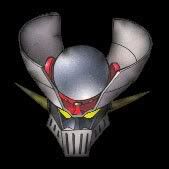Post by Majingaa Zetto™ 12·03·72 on Jul 6, 2005 4:02:49 GMT 8
In my personal experience... if tweezers doesn't work! use a blow/hair dryer (to soften the adhesive from the price tag) it works perfectly fine in removing price tags, adhesive tapes or unwanted stickers.
Price stickers and other unwelcome adhesives
There is nothing more annoying than having a price sticker or leftover adhesive goo mar an otherwise mint package. The one question most frequently asked by action figure collectors is, "...how do I get this price sticker off the package?!"
The first option is always the manual one; use your fingernail or tweezers and try to gently peel back the sticker. If it does not free itself easily from the package on the first try, then stop immediately; its time to bring out the big guns.
There are two products I feel comfortable recommending to collectors, they are: Goo Gone and Tape-Off. Both products contain petroleum distillates that gently dissolve the adhesive material. If used very sparingly and as directed, the packaging will be free of the sticker or adhesive and remain unharmed by the solvent. A word of warning though; if either product is allowed to soak into the edge or surface of the package (especially backing cards), then a dark indelible stain will appear. Neither product seems to have an adverse short-term effect on clear blisters.
Goo Gone and Tape-Off adhesive removers are available at most hardware stores or hobby shops.
Long-Term Care for your figures
Here are 6 simple storage tips that can help keep your packaged action figures and MOC/MIB toys safe and sound for years to come.
1- Keep the figures out of direct sunlight; the paint, plastic, paper and ink are all very vulnerable and not colourfast or fade resistant in the least.
2- Avoid high humidity, the silent card-killer. Although plastic will not be affected by high humidity for a very long time, the paper used to fabricate the card is can warp in a matter of days.
3- Avoid extremes of temperature. Normal room temperature will be fine for your figure and card for many years. Paper, glue and plastic combine to keep the figure secured. Each material responds differently to rapid or gradual changes in temperature; keep your figures in temperature regulated, well ventilated area.
4- Avoid touching your figures. That's right, your fingers can do more damage to the card and blister over time than any other factor. Why? Because more than likely you have already intuitively taken the steps outlined above in protecting your figures. What most people don't understand that the oil on your skin, as well as sweat and other residue will contribute to the eventual spotting or yellowing of the card. I don't mean to say never touch your figures, but picking them up by the blister or use a piece of clean tissue; this will actually help a great deal.
5- Don't display your figures on pegs. Retail stores and customers do more to damage carded figures before you get them than anything else. The weight of the figure on the peg will eventually warp the card and they will inevitably fall off. When you are displaying your figures at home, just stand them up on a shelf that has a lip or some device to stop them sliding off.
6- Box storage works. Cardboard boxes are fine for long-term storage if you take care to do a few things. Cardboard boxes are vulnerable to the same conditions as the card that figures are mounted on. Make sure to line the cardboard box with an acid-free paper and use the same kind of paper between the figures. The figures can be stored face-to-face, much the same way they are shipped as long as there is that acid-free paper between them. This will prevent chafing and degradation of the ink on the card. When you put the figures in a box, orient them in a vertical plane (like vinyl records in a rack), this way you can stack 2 or 3 boxes of figures on top of one another and not harm any figures. I wouldn't recommend stacking more than 3 boxes. Do not store these boxes in the garage and do not seal them! Good ventilation, controlled humidity and controlled temperature will go a long way in preserving your carded figures for years!
Condition Rating Guide
This action figure condition rating guide used in one form or another by the majority of collectors and enthusiasts. When describing the condition of a figure in an ad or in an e-mail, using this system is highly recommended.
The most important thing to remember when using this action figure condition rating guide is exactly that; it is intended only as a guide. Not every figure falls neatly into every category. Exact details can be discussed between the seller/trader and the buyer/tradee at great length if need be.
The goal of the system is to allow potential buyer and traders to get a feel for the value of a figure without the benefit of actually seeing it.
C10 The figure is like a manufacturer's proof. The blister pack must be in mint condition and completely flawless. The card must also be in mint condition, as if it had just been printed. Figures of this calibre are most often obtained directly from the manufacturer and, in rare instances, from retail stores.
C9 This is the best quality figure that will be found in a retail store. In this case the blister might have a scratch or scuff inside or out, but the card must be in mint condition.
C8 Most figures in retail stores are in either C-7 or C-8 condition. The blister pack must be fully and perfectly affixed to the card and must not exhibit any signs of yellowing. Some scuffs or scratches in the bubble may be evident. The card is in Near Mint (NM) condition, exhibiting slight wear or the odd scratch.
C7 Again, the blister pack must be fully and perfectly affixed to the card and must not exhibit any signs of yellowing. Some scuffs or scratches in the bubble may be evident. The card must be in GOOD condition; a bent corner, some creasing or scratches are common.
C6 In this case the blister pack may be dented, slightly separated from the card or showing signs of yellowing. The card must be in NM condition. This is a tough call because the card is frequently damaged when the blister begins to separate.
C5 In this case the blister pack may be slightly torn, dented, yellowing or separating from the card. The card must be in GOOD condition. There may be several creases, scratches, considerable corner wear or folding as well as other visible damage.
C4 The blister is attached to the card, but severe tearing and damage in the plastic is evident. The card itself is in poor condition and may have corners missing, faded print and the paper is often delaminating. The card is usually yellowing from the acid in the paper and feels sticky or brittle to the touch.
C3 The figure is loose and in mint condition, as if it just came out of the package with all the accessories. The accessories must also be in good condition, no bending or chewing evident.
C2 The figure is loose and in good condition The paint is likely showing some signs of wearing or chipping. It may be missing one or two accessories. A very irritating situation for collectors everywhere. "Honey, have you seen Han Solo's blaster anywhere?...".
C1 The figure is loose, the paint is damaged and it is missing all the accessories. This is a figure that has been "loved" to death and played with from day one.
This rating guide takes into account the condition of the card as well as the condition of the blister pack and the figure inside. Even with all of these factors considered, some people still take liberties with descriptions.
For example, an ad for a figure once read: "...figure loose, C-9 complete". Writing ads like this only confuses the issue. C-9 means that the figure is fully intact with accessories and is attached to a mint board with slight imperfections in the blister; the figure cannot possibly be loose.
Another example of what not to do: "...figure C-7.5 loose with all accessories. This too is bad practice. The "C" rating system is not like the Richter Scale, it is not incremental in orders of magnitude and decimals really don't mean anything.
Feel free to copy this list and pass it along. Keep in mind that it is just a guide and not written in stone. But the more people that use a unified rating system, the better for all collectors and enthusiasts.
Source:
www.magma.ca/~vicpro/actionfr.html#oddsendsA
Price stickers and other unwelcome adhesives
There is nothing more annoying than having a price sticker or leftover adhesive goo mar an otherwise mint package. The one question most frequently asked by action figure collectors is, "...how do I get this price sticker off the package?!"
The first option is always the manual one; use your fingernail or tweezers and try to gently peel back the sticker. If it does not free itself easily from the package on the first try, then stop immediately; its time to bring out the big guns.
There are two products I feel comfortable recommending to collectors, they are: Goo Gone and Tape-Off. Both products contain petroleum distillates that gently dissolve the adhesive material. If used very sparingly and as directed, the packaging will be free of the sticker or adhesive and remain unharmed by the solvent. A word of warning though; if either product is allowed to soak into the edge or surface of the package (especially backing cards), then a dark indelible stain will appear. Neither product seems to have an adverse short-term effect on clear blisters.
Goo Gone and Tape-Off adhesive removers are available at most hardware stores or hobby shops.
Long-Term Care for your figures
Here are 6 simple storage tips that can help keep your packaged action figures and MOC/MIB toys safe and sound for years to come.
1- Keep the figures out of direct sunlight; the paint, plastic, paper and ink are all very vulnerable and not colourfast or fade resistant in the least.
2- Avoid high humidity, the silent card-killer. Although plastic will not be affected by high humidity for a very long time, the paper used to fabricate the card is can warp in a matter of days.
3- Avoid extremes of temperature. Normal room temperature will be fine for your figure and card for many years. Paper, glue and plastic combine to keep the figure secured. Each material responds differently to rapid or gradual changes in temperature; keep your figures in temperature regulated, well ventilated area.
4- Avoid touching your figures. That's right, your fingers can do more damage to the card and blister over time than any other factor. Why? Because more than likely you have already intuitively taken the steps outlined above in protecting your figures. What most people don't understand that the oil on your skin, as well as sweat and other residue will contribute to the eventual spotting or yellowing of the card. I don't mean to say never touch your figures, but picking them up by the blister or use a piece of clean tissue; this will actually help a great deal.
5- Don't display your figures on pegs. Retail stores and customers do more to damage carded figures before you get them than anything else. The weight of the figure on the peg will eventually warp the card and they will inevitably fall off. When you are displaying your figures at home, just stand them up on a shelf that has a lip or some device to stop them sliding off.
6- Box storage works. Cardboard boxes are fine for long-term storage if you take care to do a few things. Cardboard boxes are vulnerable to the same conditions as the card that figures are mounted on. Make sure to line the cardboard box with an acid-free paper and use the same kind of paper between the figures. The figures can be stored face-to-face, much the same way they are shipped as long as there is that acid-free paper between them. This will prevent chafing and degradation of the ink on the card. When you put the figures in a box, orient them in a vertical plane (like vinyl records in a rack), this way you can stack 2 or 3 boxes of figures on top of one another and not harm any figures. I wouldn't recommend stacking more than 3 boxes. Do not store these boxes in the garage and do not seal them! Good ventilation, controlled humidity and controlled temperature will go a long way in preserving your carded figures for years!
Condition Rating Guide
This action figure condition rating guide used in one form or another by the majority of collectors and enthusiasts. When describing the condition of a figure in an ad or in an e-mail, using this system is highly recommended.
The most important thing to remember when using this action figure condition rating guide is exactly that; it is intended only as a guide. Not every figure falls neatly into every category. Exact details can be discussed between the seller/trader and the buyer/tradee at great length if need be.
The goal of the system is to allow potential buyer and traders to get a feel for the value of a figure without the benefit of actually seeing it.
C10 The figure is like a manufacturer's proof. The blister pack must be in mint condition and completely flawless. The card must also be in mint condition, as if it had just been printed. Figures of this calibre are most often obtained directly from the manufacturer and, in rare instances, from retail stores.
C9 This is the best quality figure that will be found in a retail store. In this case the blister might have a scratch or scuff inside or out, but the card must be in mint condition.
C8 Most figures in retail stores are in either C-7 or C-8 condition. The blister pack must be fully and perfectly affixed to the card and must not exhibit any signs of yellowing. Some scuffs or scratches in the bubble may be evident. The card is in Near Mint (NM) condition, exhibiting slight wear or the odd scratch.
C7 Again, the blister pack must be fully and perfectly affixed to the card and must not exhibit any signs of yellowing. Some scuffs or scratches in the bubble may be evident. The card must be in GOOD condition; a bent corner, some creasing or scratches are common.
C6 In this case the blister pack may be dented, slightly separated from the card or showing signs of yellowing. The card must be in NM condition. This is a tough call because the card is frequently damaged when the blister begins to separate.
C5 In this case the blister pack may be slightly torn, dented, yellowing or separating from the card. The card must be in GOOD condition. There may be several creases, scratches, considerable corner wear or folding as well as other visible damage.
C4 The blister is attached to the card, but severe tearing and damage in the plastic is evident. The card itself is in poor condition and may have corners missing, faded print and the paper is often delaminating. The card is usually yellowing from the acid in the paper and feels sticky or brittle to the touch.
C3 The figure is loose and in mint condition, as if it just came out of the package with all the accessories. The accessories must also be in good condition, no bending or chewing evident.
C2 The figure is loose and in good condition The paint is likely showing some signs of wearing or chipping. It may be missing one or two accessories. A very irritating situation for collectors everywhere. "Honey, have you seen Han Solo's blaster anywhere?...".
C1 The figure is loose, the paint is damaged and it is missing all the accessories. This is a figure that has been "loved" to death and played with from day one.
This rating guide takes into account the condition of the card as well as the condition of the blister pack and the figure inside. Even with all of these factors considered, some people still take liberties with descriptions.
For example, an ad for a figure once read: "...figure loose, C-9 complete". Writing ads like this only confuses the issue. C-9 means that the figure is fully intact with accessories and is attached to a mint board with slight imperfections in the blister; the figure cannot possibly be loose.
Another example of what not to do: "...figure C-7.5 loose with all accessories. This too is bad practice. The "C" rating system is not like the Richter Scale, it is not incremental in orders of magnitude and decimals really don't mean anything.
Feel free to copy this list and pass it along. Keep in mind that it is just a guide and not written in stone. But the more people that use a unified rating system, the better for all collectors and enthusiasts.
Source:
www.magma.ca/~vicpro/actionfr.html#oddsendsA








 [/url]
[/url]














